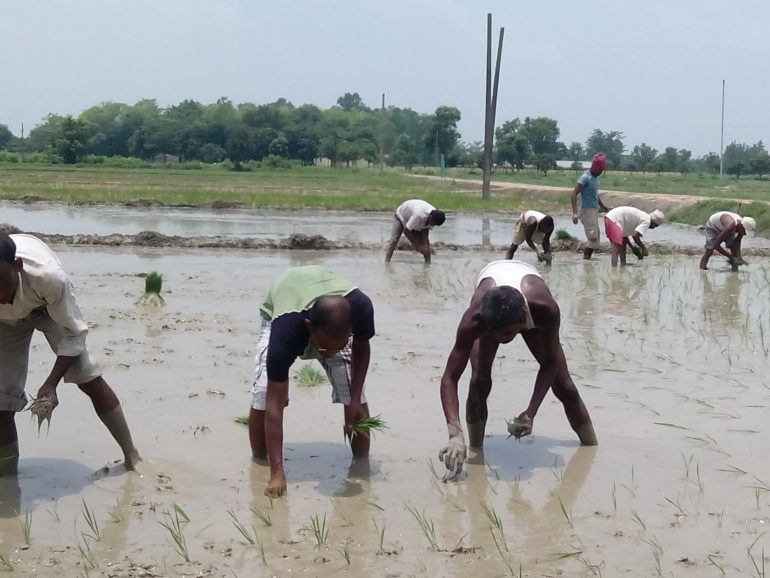As the global population grows, the demand for food increases while arable land shrinks. A new University of Illinois study investigates how rice production in India can meet future needs by adapting to changing climate conditions and water availability.
“Rice is the primary crop in India, China, and other countries in Southeast Asia. Rice consumption is also growing in the U.S. and elsewhere in the world,” says Prasanta Kalita, professor in the Department of Agricultural and Biological Engineering at U of I and lead author on the study.
“If you look at where they traditionally grow rice, it is countries that have plenty of water, or at least they used to. They have tropical weather with heavy rainfall they depend on for rice production. Overall, about 4,000 liters of water go into production and processing per kilogram of rice,” he states.
Climate change is likely to affect future water availability, and rice farmers must implement new management practices to sustain production and increase yield, Kalita says.
The United Nations’ Food and Agriculture Organization (FAO) estimates the world population will grow by two billion people by 2050, and food demand will increase by 60%.
“We will need multiple efforts to meet that demand,” Kalita states. “And with two billion more people, we will also need more water for crop production, drinking water, and industrial use.”
Kalita and his colleagues conducted the study at the Borlaug Institute for South Asia’s research farm in Bihar, India. Farmers in the region grow rice during the monsoon season, when heavy rainfall sustains the crop.
The researchers collected data on rice yield and climate conditions, then used computer simulations to model future scenarios based on four global climate models. The purpose of the study was to estimate rice yield and water demand by 2050, and evaluate how farmers can adapt to the effects of climate change.
“As the weather changes, it affects temperature, rainfall, and carbon dioxide concentration. These are essential ingredients for crop growth, especially for rice. It’s a complicated system, and effects are difficult to evaluate and manage,” Kalita states.
“Our modeling results show the crop growth stage is shrinking. The time for total maturity from the day you plant to the day you harvest is getting shorter. The crops are maturing faster, and as a result, you don’t get the full potential of the yield.”
If farmers maintain current practices, rice yield will decrease substantially by 2050, the study shows. But various management strategies can mitigate the effects of climate change, and the researchers provide a series of recommendations.
Traditional rice farming involves flooding the fields with water. Rice transplants need about six inches of standing water. If fields aren’t level, it requires even more water to cover the crops, Kalita says. However, if farmers use direct-seeded rice instead of transplants, they can increase production while using significantly less water.
Another practice involves soil conservation technology. “The soil surface continuously loses water because of temperature, humidity, and wind. If you keep crop residue on the ground, it reduces the evaporation and preserves water. Furthermore, when the crop residue decomposes, it will help increase soil quality,” Kalita explains.
The researchers also suggest implementing strategies to prevent post-harvest crop losses. FAO estimates about 30% of crops are lost or wasted after harvest, so efforts to reduce those losses can further increase crop availability and food security.
Overall, the best approach to achieve a 60% increase in rice production while minimizing additional irrigation needs is a combination of conservation strategies and a 30% reduction in post-harvest loss, the researchers conclude.
Climate change could increase rice yields
More information:
Ranjeet K. Jha et al, Predicting the Water Requirement for Rice Production as Affected by Projected Climate Change in Bihar, India, Water (2020). DOI: 10.3390/w12123312
Provided by
University of Illinois at Urbana-Champaign
Citation:
How India’s rice production can adapt to climate change challenges (2021, March 12)
retrieved 12 March 2021
from https://phys.org/news/2021-03-india-rice-production-climate.html
This document is subject to copyright. Apart from any fair dealing for the purpose of private study or research, no
part may be reproduced without the written permission. The content is provided for information purposes only.



